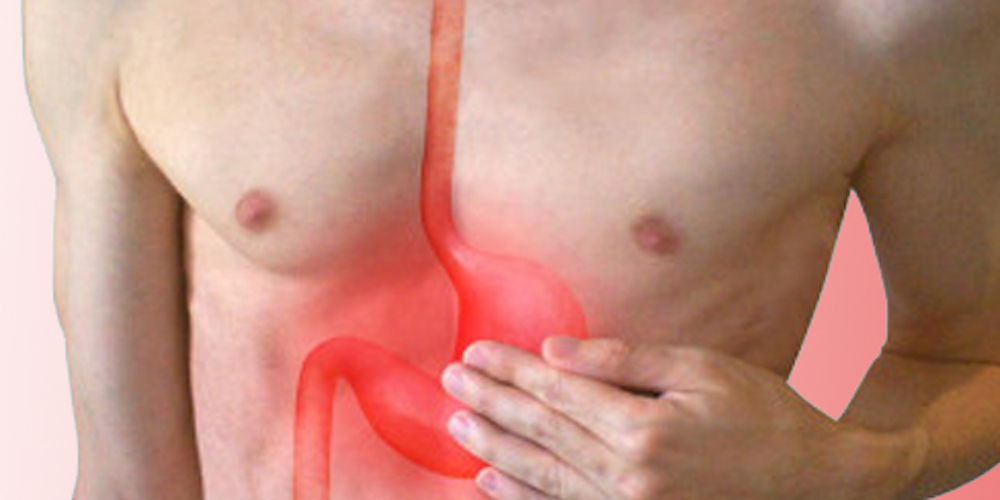Diagnosing Diseases From The Way One Breathes

By recognizing breath patterns doctors may soon diagnose peptic ulcer & disease stage
There is good news for those suffering from Peptic Ulcer disease.
A non-invasive method of recognizing breath patterns which have been developed by Indian researchers can help rapid, one-step diagnosis and classification of various gastric disorders such as ulcer dyspepsia, gastritis, and GERD.
Currently, peptic ulcer disease is an essential medical-social problem that has received special attention worldwide. The development of this disease is happened by the Helicobacter pylori bacterial infection which is considered to be the most significant risk factor. Patients with a peptic ulcer may remain asymptomatic or symptomatic, and due to undefined risk factors along with a lack of specific symptoms at the early stages, the diagnosis is often delayed, leading to high rates of recurrence and poor prognosis of the disease.
Conventional painful and invasive endoscopic methods are not enough for early detection of the acute onset and progression of peptic ulcers and various gastric complications. Moreover, the conventional endoscopic methodology is not suitable for general population-based screening and consequently, many common people with complex gastric phenotypes remain undiagnosed.
Under the Department of Science and Technology (DST), Prof. Manik Pradhan and his research team used a pattern-recognition-based clustering approach that can selectively distinguish the breath of peptic ulcers and other gastric conditions from that of healthy individuals at S. N. Bose National Centre for Basic Sciences, Kolkata.
The team of Prof. Manik Pradhan used Machine Learning (ML) protocol to extract the correct information from the large complex breathomics data sets generated from exhaled breath analysis. In a paper published in the European Journal of mass spectroscopy, they executed the clustering approach to recognize unique breath pattens, breathograms, and “breath prints” signatures. This helped in a clear reflection of the specific gastric condition of an individual person along with three different risk zones for differentiation of early and late-stage gastric conditions and precise transition from one disease state to another state.

The unique breath patterns generated by the patients are irrespective of the patient’s BMR and other confounding factors such as age, sex or lifestyle.
The research carried out at the Technical Research Centre at S. N. Bose Research Centre and funded by the DST involved a project student Ms. Sayoni Bhattacharya and project scientists Dr. Abhijit Maity and Dr. Anil Mahato who worked in collaboration with Dr. Sujit Chaudhuri, the reputed medical scientist and Gastroenterologist at AMRI Hospital, Kolkata.
Over the decades, few volatile organic compounds (VOCs) or metabolites in the exhaled breath have been proposed for the non-invasive diagnosis of gastric conditions. However, a particular VOC is related to multiple of clinical surroundings and is likely to be affected by comorbid conditions, suggesting a single molecular marker is not suitable for distinguishing various gastric complications.
Prof. Pradhan who has been working on breath analysis for several years has for the first time unravelled missing links between various gastric conditions and pattern-recognition-based clustering methods. These missing links have helped in the non-attacking diagnosis of various gastric disorders through a single breath test without going for painful endoscopy.
The primary concept behind the idea was based on the fact that the overall effect of the compounds produced endogenously by different biochemical reactions and intracellular/extracellular processes associated with the pathogenesis of various gastric phenotypes is reflected in the specific masses of the breakpoints. Hence, the method obviates the necessity of identifying molecular species in exhaled breath to diagnose and classify peptic ulcers.
The scientists have found a prototype device called “Pyro-Breath” clinically validated it in a hospital environment and patented it. This has been transferred through NRDC, New Delhi to a startup company for potential commercialization of this technology.
This can open up new non-invasive avenues for early detection of this disease, its selective classification, and assessment of the progress of various gastric complications and could help widespread population screening of infants, children, pregnant women, and seniors.


